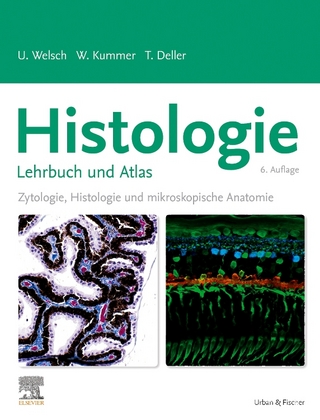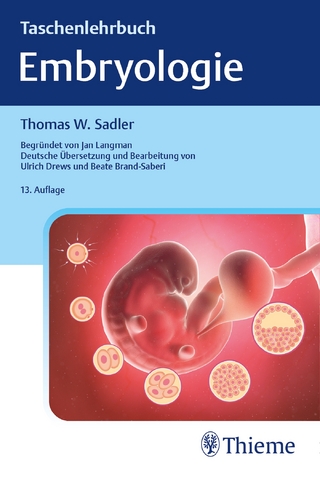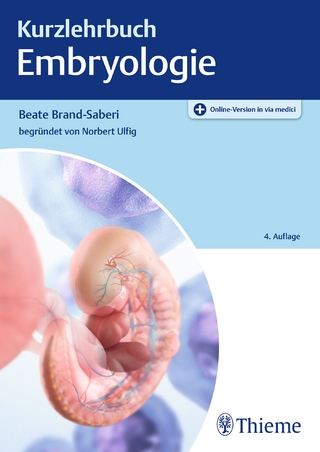
Human Cholinesterases and Anticholinesterases
Academic Press Inc (Verlag)
978-0-12-655290-4 (ISBN)
- Titel ist leider vergriffen;
keine Neuauflage - Artikel merken
Human Cholinesterases and Anticholinesterases summarizes the many fundamental concepts of human cholinesterases (ChEs) and their inhibitors. This book is divided into three chapters that represent human cholinesterase research studies from different points of view. Chapter 1 deals with the biochemical and biological background of human ChEs. This chapter also examines the molecular polymorphism, genomic origin, genetic variants, and biological roles of these enzymes. Chapter 2 provides the molecular characterization of human ChE genes and their multileveled regulation, with a special emphasis on butyrylcholinesterase. Chapter 3 discusses the scientific, ecological, and clinical implications of the studies presented in the previous chapters. Protein scientists, engineers, and researchers will find this work invaluable.
Preface Chapter 1 Biochemical and Biological Background 1 Overview of Cholinesterases 1.1 Nomenclature, Definition, and History 1.2 Cholinesterases as Elements in Cholinergic Transmission 1.3 Catalysis by Cholinesterases as Related to the Unique Properties of Their Three-Dimensional Structure 2 Biochemically Defined Subsites and Their Roles in Hydrolysis Activity 2.1 Esteratic Site 2.2 Presumptive Active-Center Anionic Site 2.3 Hydrophobie Site 2.4 Peripheral Anionic Site 2.5 Acetylcholine Binding to the Peripheral Site 2.6 Peripheral Organophosphorus Site 3 Anticholinesterases 3.1 Naturally Occurring Inhibitors 3.2 Synthetic Cholinesterase Inhibitors in Medicine 3.3 Anticholinesterase Organophosphorous Nerve Gases and Insecticides 3.4 Cholinesterase Domains Involved in Carbamate Toxicity 4 Cell Type and Subcellular Localization of Cholinesterases 4.1 Embryonic Origins of Cholinesterase Subtypes 4.2 Tissue Specificity and Developmental Alterations 4.3 Soluble Cholinesterases in Body Fluids 4.4 Cholinesterase Modulations in Cultured Cells 4.5 Control of Cholinesterase Production in Muscle 5 Molecular Polymorphism and Its Genomic Origin 5.1 General Polymorphic Scheme 5.2 Biochemical Approaches to the Complexity of Cholinesterase Polymorphism 5.3 Genetic Basis of Polymorphism 6 Putative Biological Roles of Cholinesterases 6.1 Nervous System Involvement 6.2 Implications for Motility 6.3 Development and Growth 6.4 Role of Butyrylcholinestrase Compared with That of Acetylcholinesterase 6.5 Suggestions for Peptidase Activity of Cholinesterases 7 Evolutionary Divergence and Conservation of Cholinesterases 7.1 At the Nucleotide Level 7.2 At the Primary Amino Acid Sequence Level 7.3 At the Level of Putative Biological Function 8 Genetic Variants of Human Cholinesterases 8.1 Electrophoretic Characterization of Butyrylcholinesterase Variants 9 Cholinesterases and Disease States 9.1 Nervous System Disorders 9.2 Hématologie Disorders 9.3 Proliferative Blood Cell Disorders 9.4 Autoimmune Diseases 9.5 Reproductive System Malfunction and Ovarian Adenocarcinomas 9.6 Postanesthetic Apnea 9.7 Organophosphorus Intoxication 9.8 Other Diseases Chapter 2 Human Cholinesterase Genes and Their Expression 1 Molecular Cloning and Expression of Human Cholinesterase Coding Sequences 1.1 Human Acetylcholinesterase and Butyrylcholinesterase cDNAs Differ in Their Basic Properties 1.2 Molecular Cloning of the Human Acetylcholinesterase Coding Sequence and Its Expression 1.3 Comparative Analysis of Acetylcholinesterase and Butyrylcholinesterase Coding Sequences 1.4 Expression of the Butyrylcholinesterase Gene in Chorionic Villi 1.5 Preferential Transcription of Acetylcholinesterase over Butyrylcholinesterase mRNAs in Fetal Human Cholinergic Neurons 1.6 Coordinated Expression of Cholinesterase Genes in Developing Human Germ Cells 2 Promoter Elements and Alternative Splicing in the Human Acetylcholinesterase Gene 2.1 Human Acetylcholinesterase Promoter Includes Clustered Binding Sites for Multiple Transcription Factors 2.2 Variable Choices for Carboxyl Termini 2.3 Alternative Splicing Creates Two Distinct Acetylcholinesterase Forms 2.4 Energy and Stability Considerations for Acetylcholinesterase 2.5 Nucleotide Composition and Potential Methylation Sites 2.6 Variable Acetylcholinesterase Forms 2.7 Are There Biochemical Differences between Alternative Acetylcholinesterase Subtypes? 3 Search for Molecular Origins of Butyrylcholinesterose Polymorphism by cDNA Screening, Deletion Mutagenesis, and Xenopus Oocyte Co-injection 3.1 Microinjected Oocytes as a Heterologous Expression System to Study Cholinesterase Biosynthesis 3.2 Oocytes Injected with Synthetic Butyrylcholinesterase mRNA Produce Active Butyrylcholinesterase 3.3 Molecular Form Polymorphism 3.4 Transport and Extracellular Surface Association 3.5 Evidence for a Single Transcript 3.6 Partial Deletion Constructs 4 Chromosomal Localization of Human Cholinesterase Genes 4.1 Mapping by Genetic Linkage of Butyrylcholinesterase 4.2 Physical Mapping of the Butyrylcholinesterase Gene by Blot Hybridization to Somatic Cell Hybrid Panels 4.3 Direct PCR Amplification of Genomic Acetylcholinesterase Sequences from Somatic Hybrid Cell Lines 4.4 Verification of Chromosome 7 Assignment for the Acetylcholinesterase Gene 4.5 Cholinesterase Gene Mapping by In Situ Hybridization to Mitotic Chromosomes 4.6 Rare YT2 Blood Group Is Associated with Acetylcholinesterase Polymorphism 5 Genomic Origin of Butyrylcholinesterase Variants: Multiple Point Mutations in the Butyrylcholinesterase 5.1 Correlations of "Silent," "Atypical," and Other Butyrylcholinesterase Variants with Specific Point Mutations 5.2 Characterization of an Unusual Tumor-Specific Butyrylcholinesterase cDNA 5.3 Unusual Butyrylcholinesterase cDNA Characterized by Alternative Termination and Point Mutations in the Coding Region 5.4 3'-Extended Butyrylcholinesterase cDNA Maps to Chromosome 3q26-ter 5.5 3'-Extended Tumor Butyrylcholinesterase mRNA Transcripts Are Functional 6 Structure—Function Relationships in Human Butyrylcholinesterase Variants 6.1 Biochemical Properties of the Unusual Butyrylcholinesterase Mutants 6.2 Resistance of Glycine 70 Butyrylcholinesterase Muteins to Solanidine 6.3 Inhibited Butyrylcholinesterases Carrying the Glycine 70 Mutation Resist Oxime Reactivation 6.4 Additional Nucleotide Substitutions in the Butyrylcholinesterase Gene and Their Functional Effects 6.5 Intramolecular Relationships in Cholinesterases Revealed by Heterologous Expression of Site-Directed and Natural Cholinesterase Variants 6.6 Structure—Function Studies of the Active Site of Human Cholinesterases 7 Manipulations of Butyrylcholinesterase Gene Expression Modulate Murine Megakaryocytopoiesis In Vitro 7.1 Early Indications for Involvement of Cholinergic Elements in Platelet Production 7.2 Antisense Oligonucleotide to Butyrylcholinesterase mRNA Blocks Megakaryocytopoiesis in Culture 7.3 Conditioned Medium from Butyrylcholinesterase-Producing Xenopus Oocytes Promotes Megakaryocytopoiesis 8 In Vivo Amplification of the Human Cholinesterase Genes 8.1 In Individuals Exposed to Organophosphorous Poisons 8.2 In Leukemias 8.3 In Polycythemia Vera 8.4 In Lupus Erythematosus 8.5 In Ovarian Adenocarcinomas 8.6 Tumor-Related Chromosome 3 and 7 Abnormalities May Involve the Cholinesterase Chapter 3 Scientific and Environmental Implications 1 Human Acetylcholinesterase and Butyrylcholinesterase Genes: Comparative Analysis 1.1 Differential Codon Usage and Exon-Intron Buildup 1.2 Transcriptional Control in Developing Neurons 1.3 Coordinated Regulation in Human Germ Cells 2 Expression of Recombinant Acetylcholinesterase and Butyrylcholinesterase in Microinjected Xenopus Oocytes 2.1 Biochemical Characteristics 2.2 Post-transcriptional Regulation of Cholinesterase Heterogeneity 2.3 Immunohistochemical Detection of Nascent Cholinesterase Molecules 3 Unusual Tumor Butyrylcholinesterase mRNA Transcripts 3.1 Chromosomal Localization of the Mutated Gb5 Butyrylcholinesterase Gene 3.2 Functional Characteristics of Extended Butyrylcholinesterase mRNA 3.3 Induction of Acetylcholinesterase Expression by a 9 S Glioblastoma mRNA Fraction 3.4 Heterozygosity of Mutated Butyrylcholinesterase 4 In Ovo Expression of Human Butyrylcholinesterase Muteins Reveals Structure-Function Relationships 4.1 Distinct Effects of the Single Gly 70 and Pro 425 Mutations 4.2 Synergistic Contributions to Biochemical Changes in Doubly Mutated Butyrylcholinesterase Variants 4.3 Dissection of Chohnesterase Domains by Combining In Vivo Mutability and Site-Directed Mutagenesis 4.4 Differential Catalytic Activities of Butyrylcholinesterase 4.5 Heterogeneous Origins for "Silent" Phenotype in Butyrylcholinesterase Reveal Specific Roles for Defined Peptide Domains 5 Isolation of Mutated Butyrylcholinesterase Sequences from cDNA Libraries and Their Detection in Genomic DNA 5.1 Does Chromosome 16 Contain a Chohnesterase Related Gene? 5.2 Acetylcholinesterase and Butyrylcholinesterase Are Encoded by Distinct Genes 5.3 Human Acetylcholinesterase Gene Maps to the Long Arm of Chromosome 7 5.4 Alternative Acetylcholinesterase mRNAs Are Differentially Represented in Diseased Tissues and Cell Types 6 Putative Involvement of Cholinesterases in Development 6.1 Evolutionary Implications 6.2 Does Mutability in the Butyrylcholinesterase Gene Reflect a Selection Advantage? 6.3 Chorionic Villi and Germ Cells as Potential Sites for Environmental Pressures on Chohnesterase Genes 7 Modifications in the Human Cholinesterase Genes 7.1 Inheritable Amplification of Defective Butyrylcholinesterase Genes in Individuals Exposed to Organophosphorous Insecticides 7.2 Coamplification of Cholinesterase Genes in Leukemias and Platelet Disorders 7.3 Cholinesterase Genes and Oncogenes Amplify in Noncancerous Thrombocytopenia Associated with Lupus Erythematosus 7.4 Cholinesterase Genes Coamplify with Oncogenes in Hemopoietic and Ovarian Tumors 8 Pollution and Ecological Implications 8.1 Are Mutability and Amplification of Cholinesterase Genes Related? 8.2 Prospects for Therapeutic and Biotechnological Use of Recombinant Cholinesterases 8.3 Future Directions for Human Cholinesterase Research Bibliography Index
| Erscheint lt. Verlag | 22.7.1993 |
|---|---|
| Verlagsort | San Diego |
| Sprache | englisch |
| Gewicht | 610 g |
| Themenwelt | Medizin / Pharmazie ► Medizinische Fachgebiete ► Pharmakologie / Pharmakotherapie |
| Studium ► 1. Studienabschnitt (Vorklinik) ► Histologie / Embryologie | |
| Naturwissenschaften ► Biologie ► Genetik / Molekularbiologie | |
| Naturwissenschaften ► Biologie ► Humanbiologie | |
| Naturwissenschaften ► Biologie ► Zoologie | |
| ISBN-10 | 0-12-655290-8 / 0126552908 |
| ISBN-13 | 978-0-12-655290-4 / 9780126552904 |
| Zustand | Neuware |
| Haben Sie eine Frage zum Produkt? |
aus dem Bereich


